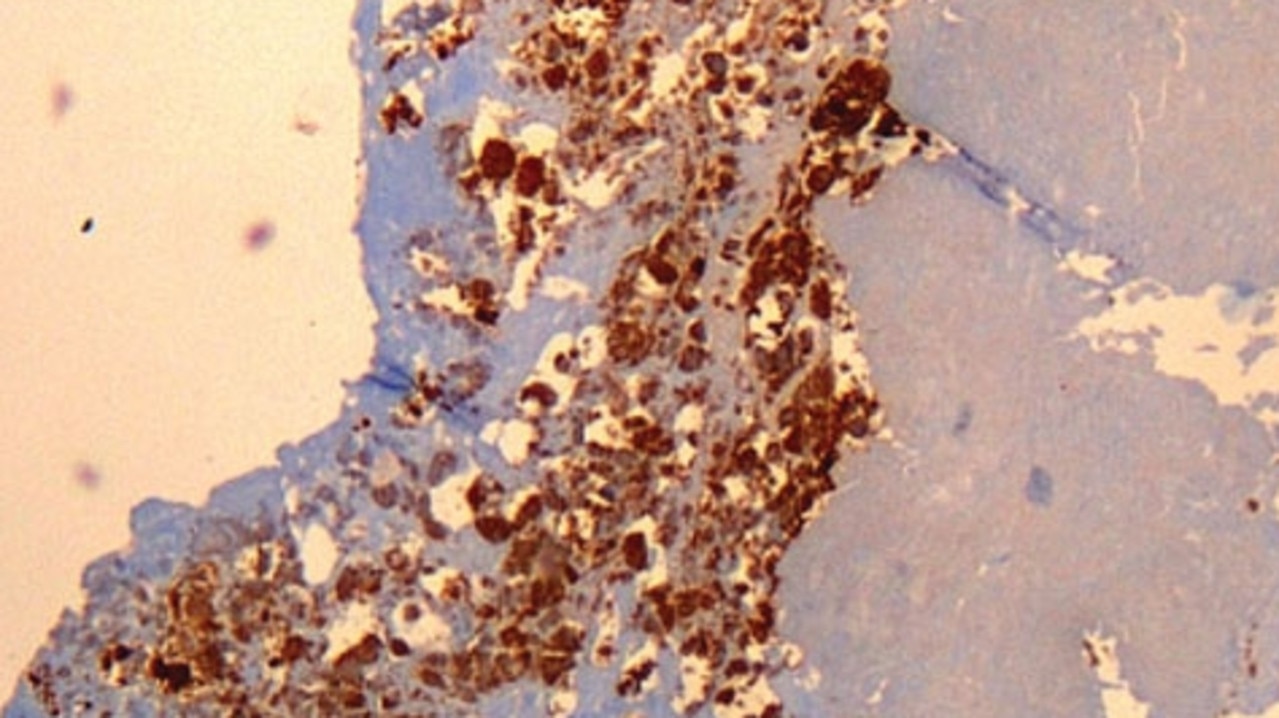Smallpox and the photos anti-vaxxers don’t want you to see
It was one of the deadliest diseases known to mankind and while debate still thrives today, this photo proves one point. WARNING: Graphic

It was one of the deadliest and most contagious diseases known to humankind.
Smallpox killed over half a billion people in the 20th century alone — three times the number of deaths from all of the century’s wars combined.
It began with flu-like symptoms, progressing to an horrendous rash consisting of deep sores, filled with fluid that would blister, ooze, crust and scab over, leaving permanent scars on those lucky enough to survive.
Just one teaspoon of smallpox virus is enough to infect every man, woman and child on earth.
But then a miracle — British doctor Edward Jenner created a vaccine after noticing that the milk maids (the women who milked the cows) who had been infected with “cow pox” never contracted smallpox.
This month marks the 270th birthday of Dr Jenner, known as the pioneer of vaccination who arguably saved more lives than anyone else in history. And yet, despite saving countless lives, he still had to deal with the early “anti-vaxx” movement where in 1796 as well as 2019, the boundaries between opinion and fact are often blurred.
RELATED: Mad King George III: Was he really insane?
RELATED: How accidental erections turned into millions
RELATED: ‘Bloody code’: Worst ways to be executed
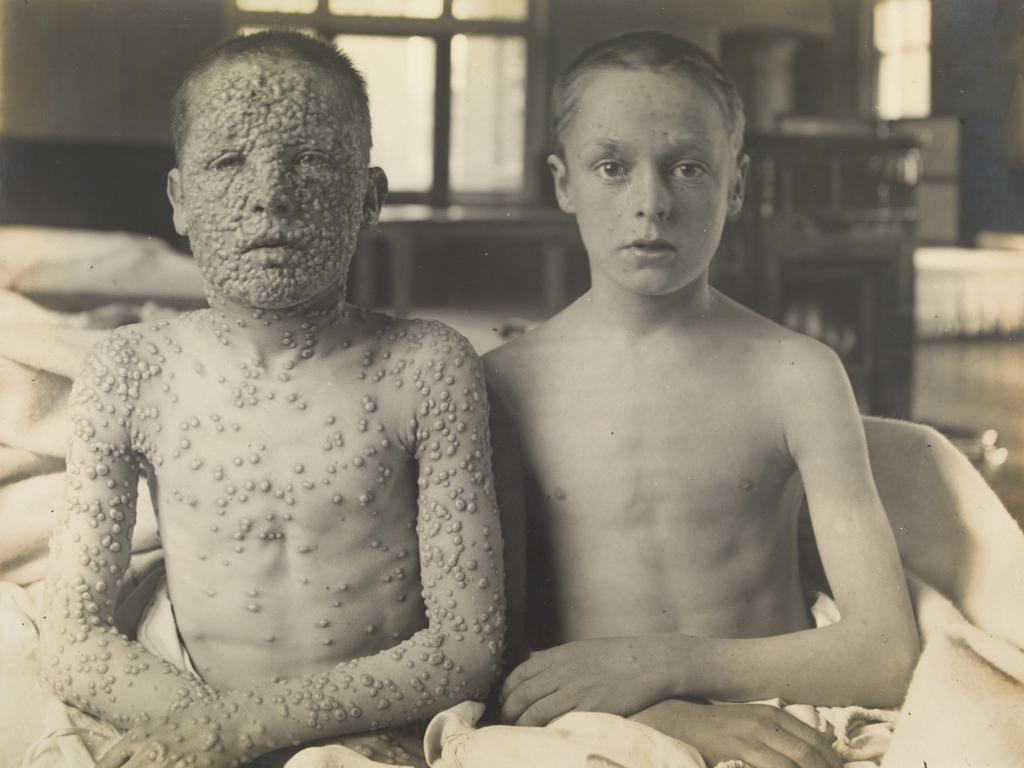
Many people are too young to have ever seen smallpox in their lifetime, or have simply forgotten the sheer horror of the disease.
With a mortality rate of up to 30 per cent, many survivors of smallpox were left with significant scarring and even blindness. Smallpox has no cure, but that didn’t stop people from trying, with treatments including being bled, purged, starved, and wrapped tightly in red cloth.
Owen Gower, vaccine expert and museum manager at Dr Jenner’s House, told news.com.au it’s difficult for many of us to comprehend what was achieved through vaccination against smallpox.
“It’s now more important than ever to see Jenner being recognised. He provides a model for how to educate and respond to misinformation or concerns about vaccination. Jenner would patiently tell people why they should be vaccinated and how to vaccinate.
“He even provided free vaccination to those who needed it most, opening the world’s first free vaccination clinic in a summerhouse in his garden,” Gower said.
“Jenner was utterly scientific in all that he did and his correspondence on the subject was based on fact, rather than emotion. In terms of vaccination we have to let the facts speak for themselves.
“Smallpox is dead, and there is hope that others could soon follow; and we are so close with polio. Vaccines save an estimated two to three million lives every year.”


THE CREATION OF THE SMALLPOX VACCINE
The story of how Dr Jenner created the vaccine is fascinating.
According to Gower, we need to look at what was happening in the 1500s when people were manipulating the body’s immune system to try and protect themselves from smallpox because they realised those who’d contracted the disease were unlikely to catch it again.
Many people set about deliberately infecting themselves with what was, hopefully, a small dose of smallpox.
This was done by either scratching fluid from a smallpox blister into their own skin or by inhaling ground up blister scabs.
“The technique was introduced to England in 1721 by Lady Mary Wortley Montagu and she called it inoculation, or engrafting which is how she had heard it described in Turkey. Later it came to be known as variolation and was widely practised in Britain until replaced by Jenner’s vaccine inoculation,” Gower said.
In rural parts of Britain, there was a tradition that those who had contracted cowpox would also be safe from smallpox. Cowpox is a disease usually affecting cattle, but it could also be passed to people in close contact with animals, causing mild symptoms.
Jenner decided to apply scientific tests to the country legend and began collecting evidence of people who had contracted cowpox and then been exposed to smallpox without becoming infected.
“Jenner waited until he met someone with a cowpox infection so he could carry out a controlled experiment.
“In 1796, Jenner was approached by Sarah Nelmes, a dairymaid, who had caught cowpox from a cow named Blossom. Jenner scratched pus from the blister on her hand onto the arm of James Phipps, an eight-year-old boy who had never contracted cowpox or smallpox,” Gower said.
“Phipps became slightly ill with cowpox, but soon made a full recovery. Jenner then attempted to variolate Phipps, to expose him to smallpox, in order to test whether or not he was now immune.
“As Jenner had expected, and to everyone’s relief, Phipps did not contract smallpox. Over the next two years, Jenner carried out the experiment on different subjects before writing up and publishing his work.”
Jenner named the new technique “vaccine inoculation”, later shortened to “vaccination,” after the Latin “vacca” for cow.
These are just 2 of the 1,981 people infected with smallpox during the 1896 outbreak in Gloucester. We know their names: George Allen, 56, a blacksmith, and his son William, 30, a machinist. Neither had been vaccinated and William considered himself strongly against vaccination. pic.twitter.com/eJ4RzO2KmU
— Dr Jenner's House, Museum and Garden (@DrJennersHouse) May 27, 2019
THE FIRST ANTI-VAXXERS
As long as there has been vaccination, there has been an anti-vaccine movement. The British medical and scientific community of the early 1800s was said to be very cliquey and dominated by highly influential people.
According to Gower, this meant there were fierce personal rivalries.
Variolation, inoculation with smallpox as a preventative measure, had only been introduced relatively recently and many of the leading physicians were making significant amounts of money from it.
“Into this came a country surgeon promoting a safer alternative and who wanted to give his vaccination away for free. Out of jealousy and fear of losing their income, people started to attempt to discredit Jenner and his work,” Gower said.
“Many of the arguments against vaccination that we see today stem from this period: the idea that Jenner had no qualifications, that vaccination could actually cause smallpox, syphilis, or any number of diseases, and that vaccination would affect the way the body worked by the introduction of material that was not meant to be there.
“The reason many of these claims have pervaded is mostly because they are based on the tiniest grain of truth which, when taken out of context, can give them an air of veracity that isn’t deserved.”
While it is true that Jenner didn’t have a formal qualification, that’s because he trained as a surgeon at a time when there were no degrees for surgeons.
According to Gower, in the early years of vaccination people were sometimes contracting other infectious diseases, or blood poisoning, as a result of vaccination but that was because it was not a sterile procedure at the time and there was a risk of contamination, which is not the case today.
“There were also religious arguments, that protecting people against disease somehow undermined the natural order of things, alongside concerns that infection with cowpox would turn your into a cow, something that the political cartoonist James Gillray famously satirised,”Gower said.
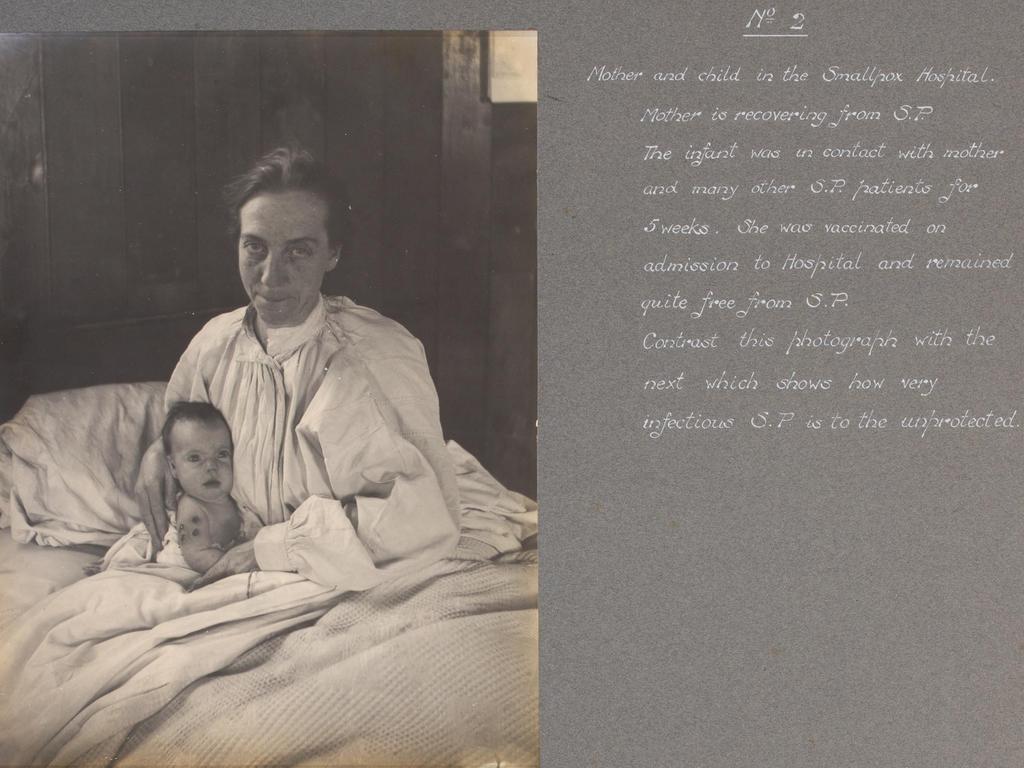
THE STORY BEHIND THE FAMOUS SMALLPOX PHOTO
The iconic photo of the two boys — one vaccinated against smallpox and one who hadn’t been vaccinated — was published in 1901, and taken by Dr Allan Warner at the Leicester Isolation Hospital.
Dr Warner believed that the best way to challenge fears and misinformation about vaccination was to show people the horrors of disease and the clear evidence of vaccination at work.
According to Dr Jenner’s House, where the photograph is on display, the boys were said to be classmates; whether the boy with smallpox survived or not wasn’t officially recorded. But it’s believed the fact that he is sitting up is a sign that the infection wasn’t as bad as it looks. If he did survive, he would have had lifelong, extensive scarring.
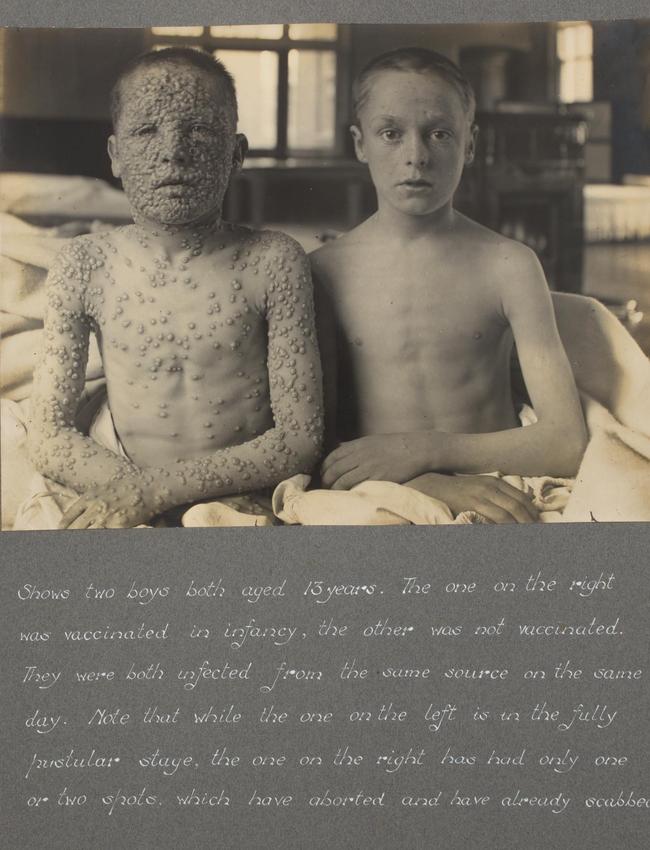
ANTI-VAXXERS OF TODAY
Medical historian and best-selling author of The Butchering Art, Dr Lindsey Fitzharris told news.com.au she is frequently blocked on social media by anti-vaxxers who refuse to acknowledge the facts.
Dr Fitzharris said vaccination is not a freedom of choice issue, it’s a public health issue.
“In its most pernicious form, smallpox caused explosive haemorrhaging — death occurred within 48 hours. Those who survived had extensive scarring. Some went blind. It did not just make you “look ugly” for a few days. (Note: Dr Fitzharris has been contacted by anti-vaxxers who play down the impact of small pox by telling her that small pox only made people “look ugly”).
“Anyone trivialising smallpox is doing so from a place of privilege, since they are unlikely to have had contact with it because it was eradicated in 1980.
“This was an unprecedented event in history, signalling the first and only annihilation of a human disease. It has since been hailed the single greatest humanitarian achievement of all time. The victory saved tens of millions of lives.
“All you need to do is look at photos of this disease from the early 20th century to realise its horrendous power,” Dr Fitzharris said.
Dr Fitzharris said there are many misconceptions about the smallpox vaccine, one of them being that Jenner killed his son by vaccinating him.
“There is no historical evidence to back up this claim. In 1810, Jenner’s eldest son died from tuberculosis, which he contracted from a tutor employed for his education. Crucially, he had never been vaccinated by Jenner for smallpox; and even if he had, there is no evidence to suggest being vaccinated for smallpox made one vulnerable to tuberculosis.”
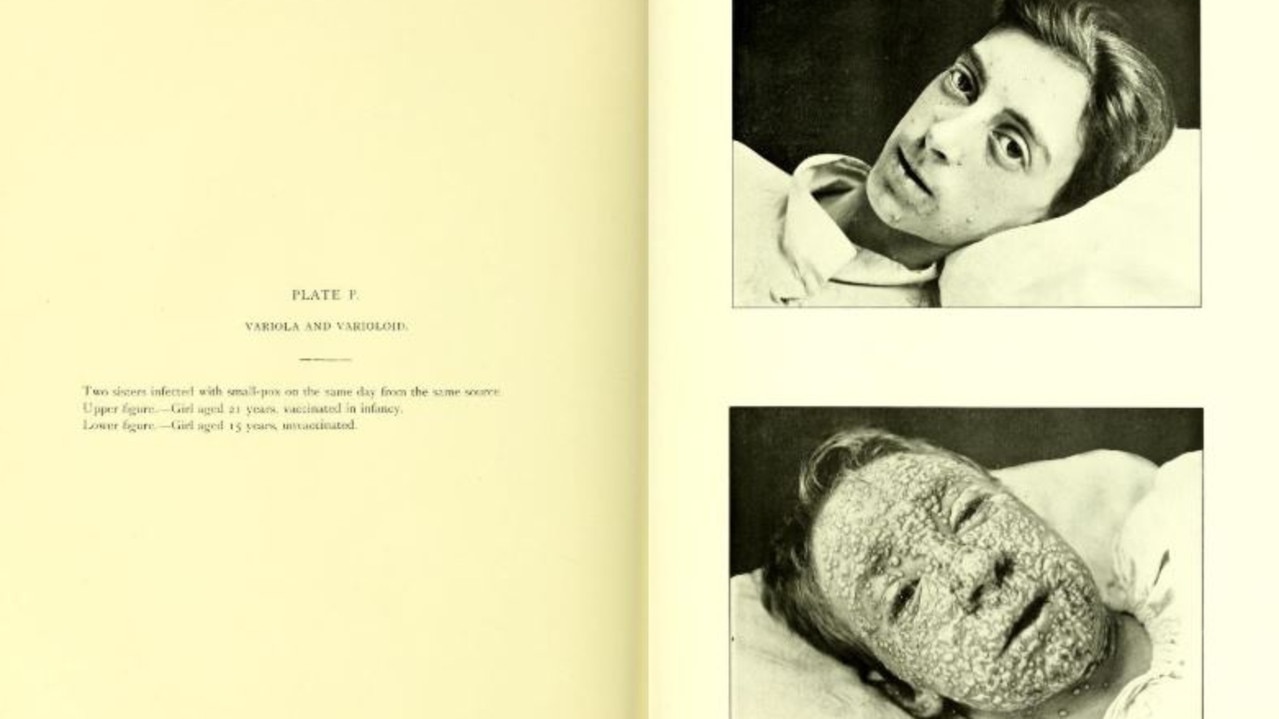
According to Dr Fitzharris, other misconceptions confuse inoculation and vaccination. The former is an ancient practice which used the smallpox virus to confer immunity onto a patient. This was dangerous because the person would become temporarily contagious, and thus could trigger an outbreak of the virus in the general population.
“Vaccination, on the other hand, used cowpox to confer immunity. Indeed, the word “vaccination,” coined by Jenner in 1796, is derived from the Latin root vaccinus, meaning “of or from the cow.” This practice, pioneered by Jenner, was far safer than inoculation.”
One argument anti-vaxxers use is to say, “Smallpox would have just gone away anyway without vaccination.”
Gower said this is absolutely not true.
“People often list improved hygiene or even just the natural death of disease as the reasons for the eradication of smallpox. The truth is that no other human disease has just gone away,” Gower said.
“Smallpox was eradicated after a targeted vaccination campaign. It will not come back. Cases of other diseases have dramatically reduced with the introduction of vaccination and, conversely, increased when vaccine take-up has been low.”
A recent example of this is measles where in the US, 971 cases have been reported in 2019 — the greatest number since 1992. US officials blame anti-vaccine groups for spreading misinformation about vaccine safety and the danger of measles.
So how would Dr Jenner feel about modern day anti-vaxxers? Gower believes he would be mortified.
“I think Jenner would be very upset that, whilst science and medicine have moved on so much and we now understand so much more about how disease is spread and how vaccines and the immune system work, historical misinformation is still being used in an attempt to discourage people from being vaccinated,” Gower said.
According to Gower, two samples of smallpox are kept in very secure storage: one by USA and the other by Russia. Some argue they need to be kept for vaccine research, improved diagnostics (just in case) and maybe even research into treatment. Others disagree and think they should be destroyed.
Dr Jenner’s House, which is dedicated to educating people about Jenner, has an excellent Twitter thread dispelling many of the myths about vaccination.
LJ Charleston is a freelance historical journalist. Continue the conversation @LJCharleston



